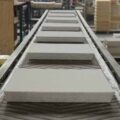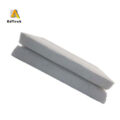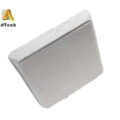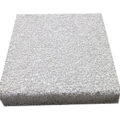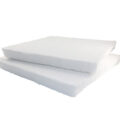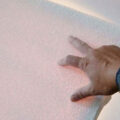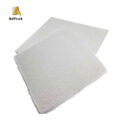Porous ceramic filter product has high porosity, excellent filtering effect, low-pressure loss during the filtration process, high filtration efficiency, and long service life. the porosity ambassadors the large surface area of the pores, the large contact area with high-temperature smoke or sewage, and the filtering and purification effect Increase and save the cost of purification treatment of polluted fluids.
High strength: It can withstand large pressure differences, has excellent corrosion resistance, erosion resistance, high reliability, and high safety.
The pore size distribution is ideal so that more than 95% of the high-temperature dust particles can be filtered and removed at one time.
The pore shape is a three-dimensional network through structure, which can greatly increase the stroke of the solid particles in the filter material, and significantly improve the primary purification rate.
The pores distributed in the network structure can effectively avoid the accumulation of solid particles in the body, thereby reducing the number of cleaning and maintenance. At the same time, it can reduce the resistance of cleaning backflush and facilitate cleaning.
With excellent thermal conductivity and low thermal expansion coefficient, the ceramic filter material can be used for high-temperature dust purification below 1350 ℃ and work at the extreme temperature of -40 ℃ without damage.
After the porous ceramic is filtered for a period of time, because the internal channels may be blocked by particulate impurities in the fluid medium, the surface filter cake layer is thickened, resulting in an increase in filtration resistance and a decrease in flow rate. At this time, it can be through gas blowback, liquid backwash, or gas liquid The way of shuffling is regenerated so that it basically returns to the level of the original state. Regular back-blowing and back-washing can greatly extend the service life of porous ceramic filter elements.
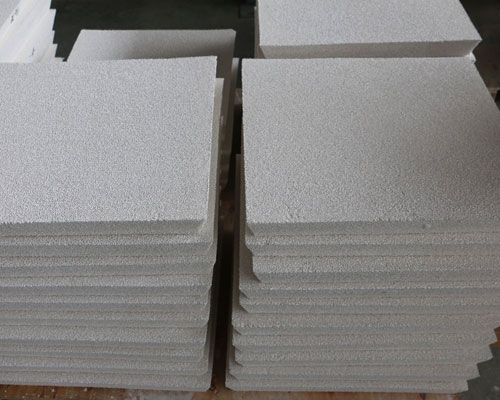
The filtration of Porous Ceramic Filter product is a filtration method that combines adsorption, surface filtration, and deep filtration.
The porous ceramic filter filtering mechanism is mainly inertial collision, diffusion, and interception. The impurity particles in the fluid flowing through the microporous pores of the porous ceramic filter element are caught in contact with the microporous pore wall due to inertia. The inertial impact is proportional to the square of the diameter of the impurity particles and inversely proportional to the flow velocity and fluid viscosity.
Due to Brownian motion, the impurity particles leave the streamline and contact the wall of the microporous channel, thereby being captured. Diffusion capture is inversely proportional to flow rate and fluid viscosity. The impurity particles are captured because the pores are larger than the micropores, which is a surface filter.
The retention is only related to the size of the impurity particles and has nothing to do with the flow rate and fluid viscosity. When the fluid flows through the porous ceramic filter element, the particles larger than the pore size of the filter element are trapped on the surface to form a filter cake layer, and the particles smaller than the pore size of the porous ceramic leaves the streamline and the micropore wall contact due to inertia and Brownian motion. Some particles are trapped on the surface or deposited in the porous ceramic pores.
Due to the tortuous migration of the porous ceramic microporous channels, the bridging effect, inertial collision, and Brownian motion formed by the fluid medium on the porous ceramic surface, the filtration accuracy is much higher than its own pore size. For example, in the 10m pore size porous ceramic filter element, when the filter medium is liquid, its filtration accuracy is 1Lm, and when the filter medium is gas, its filtration accuracy reaches 0.5Lm.
After the ceramic filter runs for a certain period of time, because the internal communication of the filter element may be blocked by particulate impurities in the fluid medium, the surface filter cake layer is thickened, resulting in an increased infiltration resistance, and when the flow rate is reduced, it can be back-washed by gas, liquid backwash or gas The one-liquid mixed washing method regenerates, and the device basically recovers to the initial state level. Therefore, timing back blowing and backwashing can greatly extend the service life of porous ceramic filter elements.


